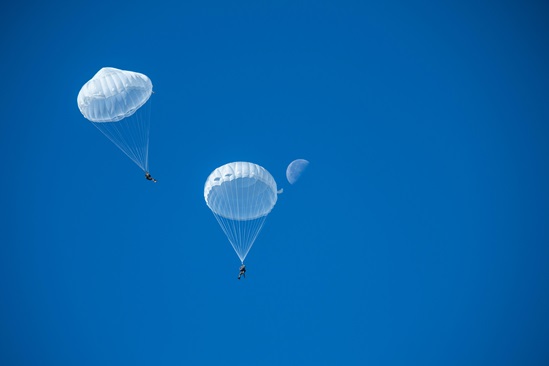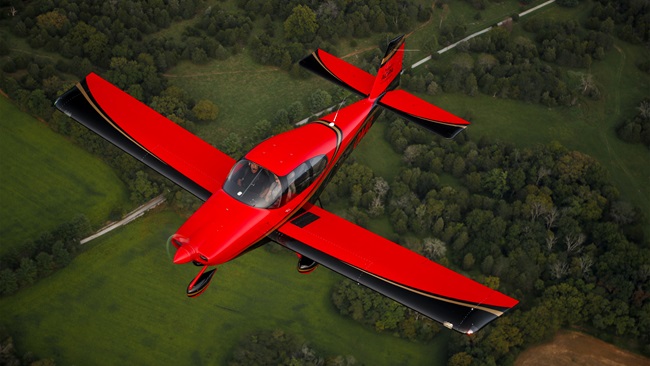Night magic
Aerobatics and pyrotechnics in a Long-EZ
It was a very good year.
In 2018, a newly minted airshow pilot was asked the big question: Would he like to perform in the airshows during EAA AirVenture, the super show of the aviation year, the granddaddy of them all?

Kyle Fowler had only begun his aerobatic act less than two years earlier. What was it about his performance that got him, a Canadian, an invitation to the big show?
His “funny little backwards airplane.” A 1986 Rutan Long-EZ, which the trim young man wears like a glove. And in 2018 he nervously took to the sky at OSH and wowed the crowd.
“I didn’t think I’d be nervous, but this is something else,” he admitted then.
Now he’s a veteran of AirVenture, having performed each year since (except that awful pandemic year) and crowds know his 1,000-watt smile almost as well as his bright yellow and purple airplane.
A storyteller
Much as many would like to disparage video games, at their heart is a story. For Fowler, a child of the video game generation, telling a story with his airplane came naturally. But first he had to have his “spacecraft.” He chose the Burt Rutan-designed Long-EZ and is currently the only airshow performer to use the tandem two-seat homebuilt aircraft. The Long-EZ has a canard layout, a swept wing with wing tip rudders, and a pusher engine and propeller. The tricycle landing gear has fixed main wheels with streamlined spats and a retractable nosewheel. Fowler did not build his airplane but bought it complete. He and the painters at ArtCraft of Santa Maria, California, designed the paint scheme, and he’s responsible for the building and setting up the racks for the pyrotechnics his night airshow is famous for.
But back to the story. During day airshows, Fowler puts the little airplane through loops and rolls—“You can make anything do a loop or roll if you try hard enough and I try really hard”—and crowds are entertained by his feats, showing the profile of the aircraft and attempting aerobatic maneuvers usually only seen from aircraft like the Extra or a Pitts. But at night, Fowler wanted to make his show theatrical. With the help from friends like fellow performer Nate Hammond, and a writer he hired in Vancouver, Fowler came up with a storyline that puts his little yellow aircraft in a situation worthy of any video game.
Kyle is a maverick space pilot heading to Earth looking for a party. But when they enter Earth’s atmosphere and the little craft starts breaking up, Hank, the spaceship’s cranky computer, says, “I told you so,” and Kyle enlists the aid of the crowd to help him rescue his ship. “We enter show center, and the ship descends and starts to ‘break up.’ I fire lighting off the wings—a pyro effect—and ask the crowd what we should do. As the pyro goes off, the crowd shouts out ideas and we finally ‘reboot’ the computer and, when the crowd cheers, we come back online, and head back into space.”
It’s quite fun to hear Fowler tell the story; he looks like he is having almost as much fun telling it as performing it in his Long-EZ. “I can guarantee that anyone shorter than four feet will tell you this is their favorite airplane at the airshow. Kids just love it.” One little girl named it the “butterfly airplane” and another called it the “yellow banana pickle fork.”
Fowler grins. “I have no idea where that came from.”
Click images to enlarge and view captions.




It’s easy being yellow
In addition to the aerobatics and the pyrotechnics, airshow visitors are also very curious about the Long-EZ. Rutan designed the Long-EZ after his first designs caught on in the late 1970s. He envisioned an airplane that would not stall, therefore not spin, and employed a canard to prevent the main wing from stalling. Canards are smaller wings (lift-providing horizontal surfaces) mounted forward of the aircraft’s main wings (I think like little Tyrannosaurus hands). He added large ailerons to vary the wings’ camber. Dick Rutan and Mike Melvill flew the best-selling homebuilt around the world in 1997 (the same year singer John Denver crashed his Long-EZ off the coast of California).
Fowler delights in showing off his aircraft’s unique design. When visitors ask where’s the nosewheel and, how do you get into the aircraft, Fowler performs a demonstration. First, he picks up the aircraft by the nose and cranks the nosewheel down from inside. He puts his hands on the nose; “I have to hold it down or the weight of the engine will flip it over,” he says dramatically. “Then I climb in. I don’t have to do dead lifts at the gym anymore.”
He’s the one who says he “wears it” and says the snug cockpit is comfortable and like sitting in a La-Z-Boy. “The side stick is super responsive,” he adds.
The airframe is foam core construction with a fiberglass overlay. Long-EZs are usually white or lighter colors because darker colors cause the airframe to delaminate if overheated. ArtCraft specially painted Fowler’s Long-EZ with electroluminescent paint so when lit at night, it shines. The racks of pyrotechnics are bolted under the aircraft wings; there are 10 pyrotechnic stations. When he fires the pyro, he says it lights up the canopy, but he does not feel much effect from the exploding pyro.
“We were very careful picking a color that still reflects the heat well and yellow still does. We are very careful to keep a close eye on the structure to make sure that there are no weak spots on the airplane,” he said.
Click images to enlarge and view captions.




Born to it
Fowler started in aviation helping his father, Ken, an airshow performer who built his Harmon Rocket specifically to do airshows. The middle of three sons, Kyle volunteered to announce his father’s shows when he was 12. At 16 he started flight lessons but did not get his private pilot certificate until he was 20 (“There were girls,” he said). And got his commercial at 28. His father performed a night airshow act in formation with fellow pilot Eric Hansen in an RV–4.
“Dad and Eric were the first to do a night formation routine with pyro. I think they did a really good show,” said Fowler.
“My favorite part of my show is when I get to interact with the crowd. Yes, I love the flying part, but as an airshow performer my job is really to be an ambassador for aviation,” the 3,000-hour pilot said. “When I am signing autographs or talking to the crowd, I get to meet all sorts of people and hear their stories and ambitions for aviation. As I continue to fly shows, I now have fans who reach out telling me how I inspired them in one way or another and that they have gone and made their dream come true. That feeling is really something magical and I always look forward to hearing the next story and inspiring the next generation.”



